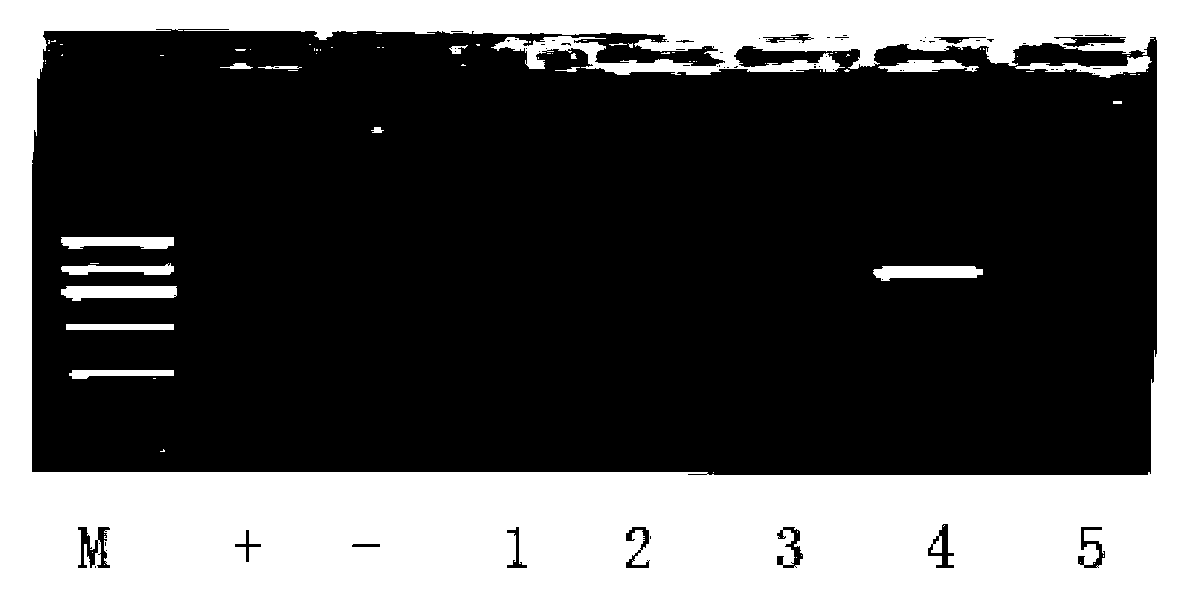Application of TT1 gene in improving cold tolerance of plant
A cold resistance, plant technology, applied in plant regeneration, plant products, genetic engineering and other directions, can solve the problem of few cold resistance genes, and achieve the improvement of plant cold resistance, good application prospects, simple and effective methods. Effect
- Summary
- Abstract
- Description
- Claims
- Application Information
AI Technical Summary
Problems solved by technology
Method used
Image
Examples
Embodiment 1
[0049] Example 1. Using TT1 gene to improve cold resistance of rice
[0050] 1. Cloning and acquisition of TT1 gene
[0051] Using the atp6 (genebank gi:89279377) gene in rapeseed as the bait protein, according to the yeast two-hybrid method (see the information disclosed by Clontech), an EST sequence (shown in SEQ ID NO: 2) in rapeseed was screened, and then According to the sequence screened in this section, the gene for improving plant cold resistance of the present invention is obtained by the method of 5' RACE (see the information disclosed by Takara Company), and its nucleotide sequence is as SEQ ID NO.1 in the sequence listing shown. Design primers according to the nucleotide sequence shown in SEQ ID NO.1,
[0052] Upstream primer (SEQ ID NO.3): 5'-ATGTCGGATCATTTGAGTTTATG-3',
[0053] Downstream primer (SEQ ID NO.4): 5'-TCAGACTGGTGTTGGGTTGGATAT-3'.
[0054] Then the nucleotide sequence shown in SEQ ID NO.1 is amplified from the rapeseed cDNA by PCR. The PCR program...
Embodiment 2
[0170] Embodiment 2, using TT1 gene to improve the cold resistance of rapeseed
[0171] 1. Preparation of Rapeseed Rapeseed Plant Overexpressing TT1 Gene and Obtaining of Seeds
[0172] 1. Construction of recombinant plasmids for overexpression of target genes
[0173] Design primers according to the nucleotide sequence shown in SEQ ID NO.1,
[0174] Upstream primer (SEQ ID NO.11): 5'-CGC GGATCCATGTCGGATCATTTGAGTTTATG-3',
[0175] Downstream primer (SEQ ID NO.12): 5'-CCGGAGC TCTCAGACTGGTGTTGGGTTGGATAT-3'.
[0176] Through PCR, the nucleotide sequence shown in the complete SEQ ID NO.1 is amplified from rapeseed cDNA, and the PCR program is as follows:
[0177] 1. 95℃ for 4min (pre-denaturation)
[0178] 2. 95℃ 30s (denaturation)
[0179] 3. 53℃ 30s (refolding)
[0180] 4. 72℃ 50s (extension)
[0181] 5. 2~4 steps cycle 30 times
[0182] 6. 72℃ for 5min (final extension)
[0183] 7. Store at 4°C.
[0184] Purify the PCR product (see the information disclosed by Qiagen)...
PUM
 Login to View More
Login to View More Abstract
Description
Claims
Application Information
 Login to View More
Login to View More - R&D
- Intellectual Property
- Life Sciences
- Materials
- Tech Scout
- Unparalleled Data Quality
- Higher Quality Content
- 60% Fewer Hallucinations
Browse by: Latest US Patents, China's latest patents, Technical Efficacy Thesaurus, Application Domain, Technology Topic, Popular Technical Reports.
© 2025 PatSnap. All rights reserved.Legal|Privacy policy|Modern Slavery Act Transparency Statement|Sitemap|About US| Contact US: help@patsnap.com



